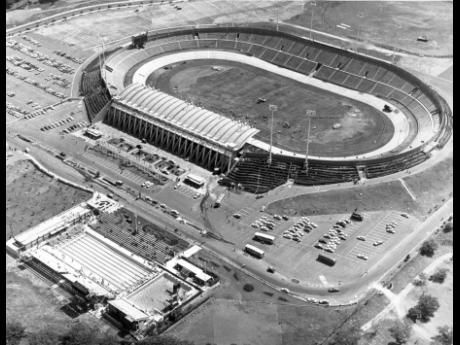National Stadium's new history is in the making, standing on the shoulders of old history
- ROGER HASFAL
- Jul 17
- 2 min read
The National Stadium in St Andrew, Jamaica, is set to undergo a dramatic and historic transformation, with construction on a state-of-the-art facility scheduled to begin in 2026 and full completion anticipated by 2029.

Once completed, the facility will emerge as a world-class, fully compliant venue capable of hosting major concerts as well as international track and field and football events.
Key features of the redevelopment include increased seating for 37,500 spectators for sporting events, which is expandable to 50,000 for concerts, as well as two specialized zones: a football-focused west stand and an athletics-focused east stand, each equipped with modern gyms, warm-up zones, and anti-doping facilities.
The design was explained by Johnathan Seebacher of the UK-based lead design firm Ryder Architecture.
The current structure is as old as the nation itself, and has been the venue for some of the most memorable events in the country's history.

But how did the idea for the stadium come about? Chairman of Independence Park Limited, Mike Fennell, explains.

Following the meeting, the Central American and Caribbean Games organisation gave Jamaica a few months to respond to the proposition after the games were concluded.
When the delegation returned to Jamaica, Dr Merchardo reported the request to the Jamaica Olympic Association, who then took the matter to the Premier Norman Manley.
At the time in 1959, Jamaica had no Stadium, and events such as Boys Champs were held at Sabina Park.
While researching suitable locations for a stadium to be constructed, areas such as the National Heroes Park and Caymanas Park were considered.
Ground was broken in 1959 for the Stadium, and the shovel used to break ground for the structure has since been stored at the Bank of Jamaica Museum in Downtown Kingston.
Following the collapse of the West Indies Federation shortly before Jamaica assented to independent nationhood on August 6, 1962, the stadium was completed and would serve as the site where the Union Jack would be lowered and the Jamaican flag hoisted for the first time.
When the stadium was built, the main building had several facilities that no longer exist or have been repurposed.
Independence Park Limited was ultimately formed in the 1970s to be responsible for all stadium facilities. It continues to be run as a business to generate revenue.
The Stadium has seen several renovations over the past six decades, including for the hosting of the IAAF World Under-20 Championships in 2002.






Comments